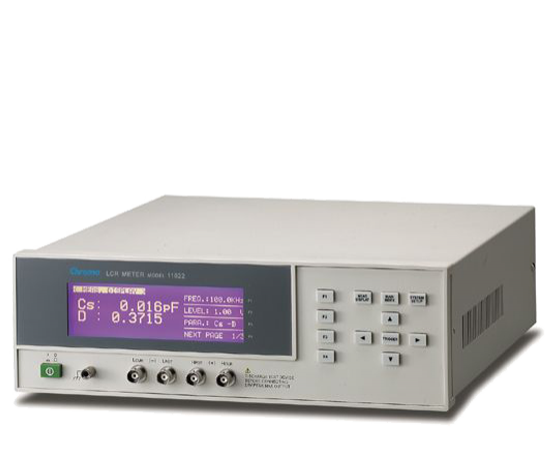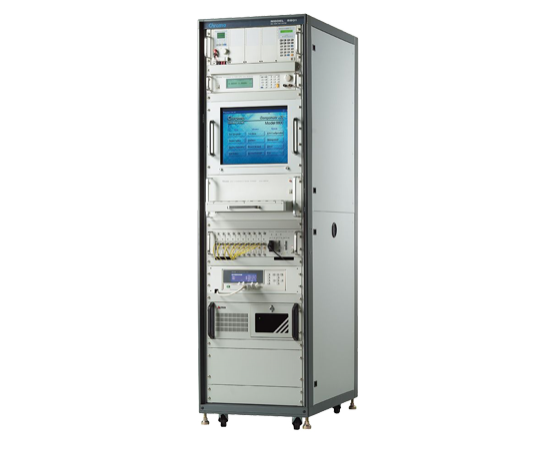Description
The Chroma 11022 and 11025 LCR Meters are passive component testers that give you the most cost effective alternative equivalent to other high priced meters. They are designed for the demanding applications of production test, incoming inspection, component design and evaluation. Programmable test signal level settings are from 10mV to 1V in steps of 10mV, and the VM/IM signal level monitor functions allow you to evaluate your devices at the level you specify. Ten test frequencies of 50Hz, 60Hz, 100Hz, 120Hz, 1kHz, 10kHz, 20kHz, 40kHz, 50kHz, and 100kHz, can be used to evaluate passive components and transformers/ LF coils.
Other low cost LCR meters on the market have shortcomings when used for low impedance component evaluations, such as the large capacitance of electrolytic capacitors and low inductance of coils. As the 11022/11025 are equipped with high resolution (0.01mΩ) in low impedance, and high accuracy (0.3%) untill 100mΩ range, they can be used to evaluate low impedance components to meet measurement requirements.
The 11025 LCR Meter can also measure DC resistance, turn ratio and mutual inductance of transformers. It is suitable for pulse transformer or LF coil evaluation. Chroma’s Transformer Test Fixture used with the 11025, can measure both the primary and the secondary parameters automatically by changing the internal relays in the 11025. With this, there is no need to change the connections required for measuring transformer parameters. With an adjustable internal DC bias current source up to 200mA as a standard function, the 11025 is the right tool for inductance inspection of telecom transformers and small power chokes under DC bias current.
The 11022/11025 LCR Meters provide a powerful combination of features designed to maximize productivity in all testing environments. Measurement speed in the SHORT integration time mode is 15mS(≧100Hz). Handler interface, Pin-out, GPIB Interface, and IEEE 488 commands are compatible with 4263B.
Finally, the 11022/11025 have a built in comparator, 8 bin sorting, trigger delay functions, and handler interface trigger functions, making system integration easy, and improving measurement throughput as well as reliability.












